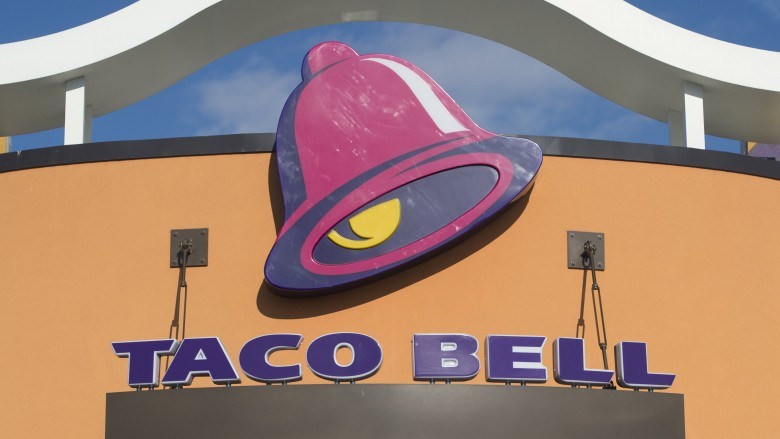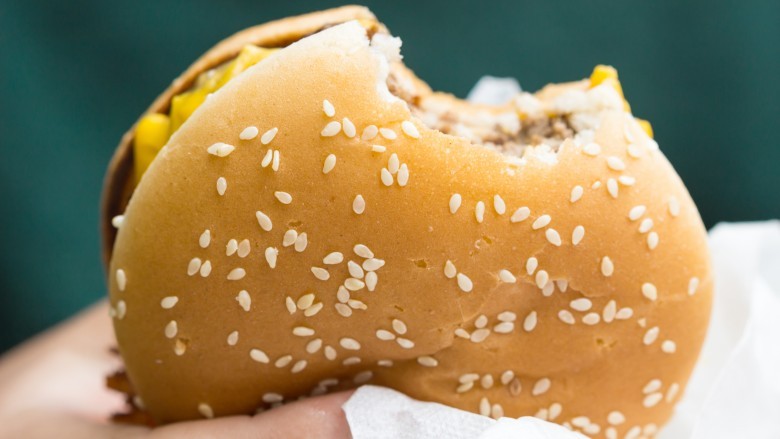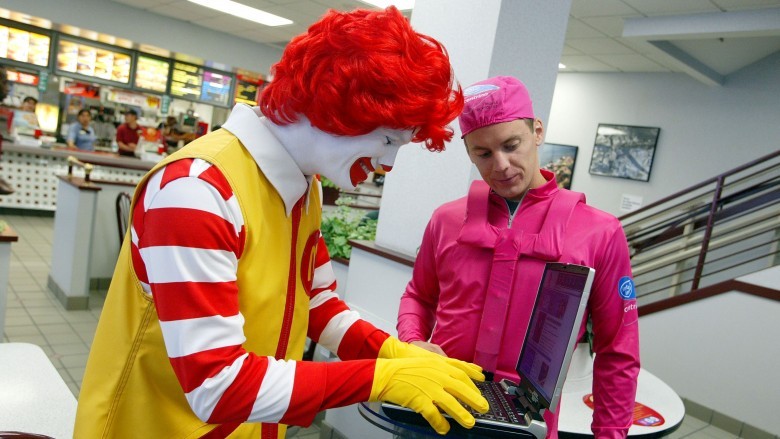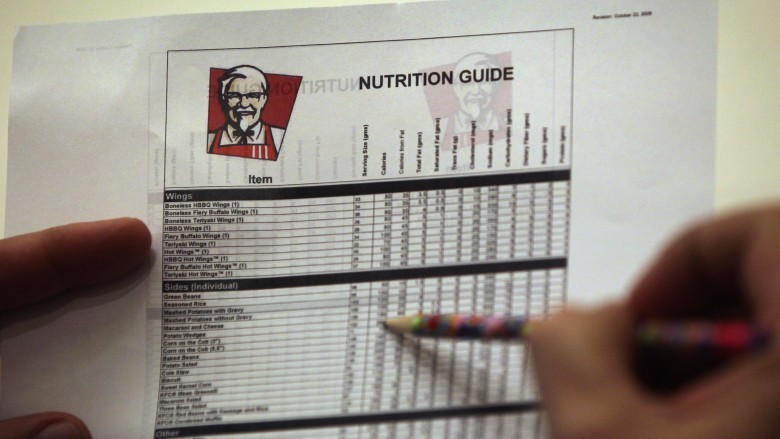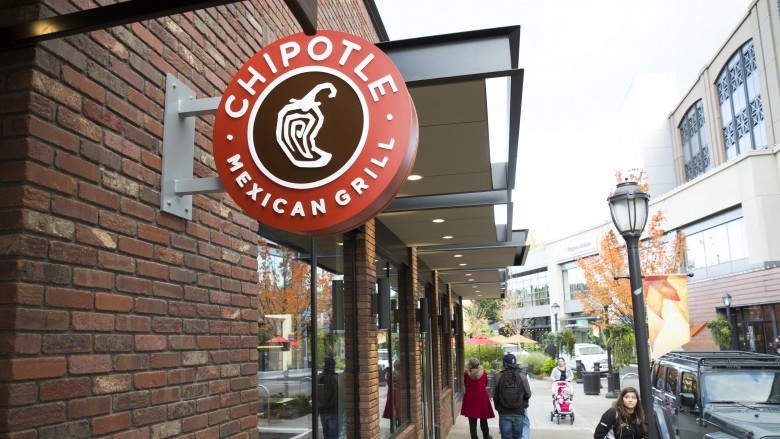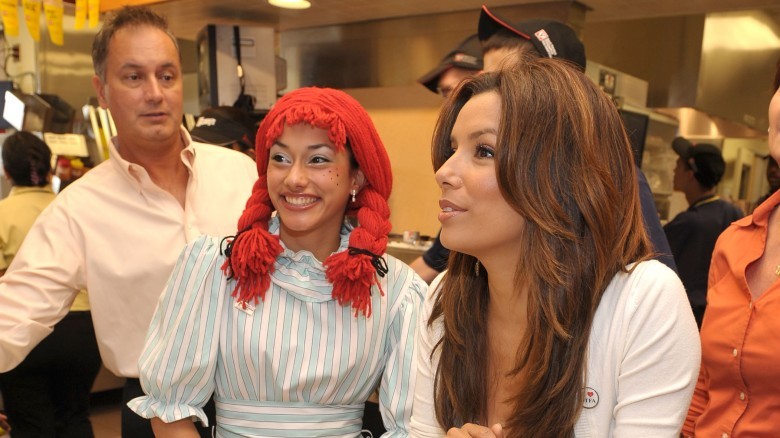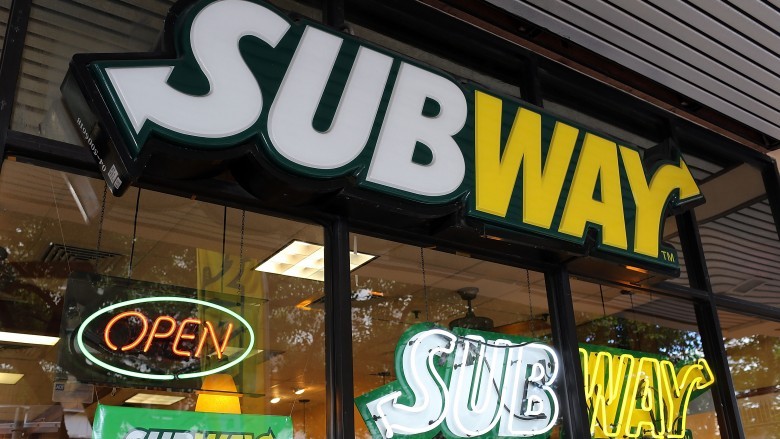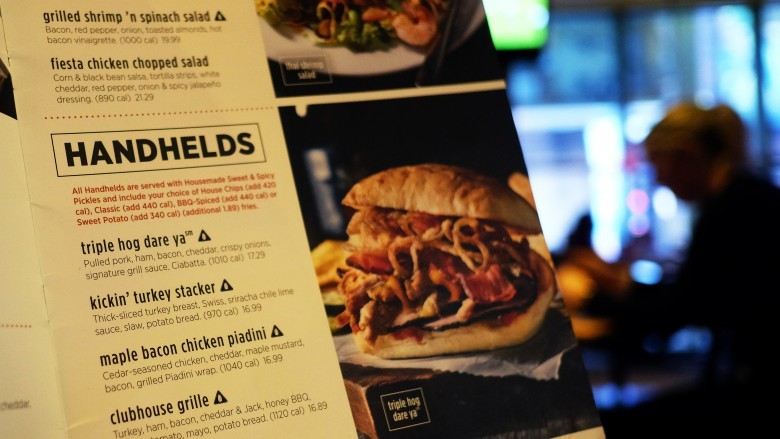Facts That Might Change The Way You Look At Fast Food Restaurants
Fast food restaurants get a bad rap, especially in a food culture that elevates all things organic and natural. It's not surprising, as these restaurants serve a litany of unhealthy items, tend to pay low wages, and have had questionable environmental practices. So what's to like?
There are, believe it or not, good things about fast food restaurants. And even though Bill Clinton, if he were president today, might not drop into McDonald's like he used to for a Big Mac after a jog, here are some facts that might change the way you look at fast food restaurants.
There's probably a vegetarian option
Fast food restaurants are known for their meat-forward menu options, like Whoppers, Big Macs, and fried chicken buckets. So it seems likely that vegetarians would be prone to avoiding these places as they'll be limited in what they can eat. And while fast casual chains like Panera and Chipotle are known for having plenty of vegetarian options, standard fast food restaurants have some pretty good options too — and they go beyond salads caged in plastic and greasy fries.
Burger King has a Veggie Whopper on its so-called secret menu. McDonald's has all-day breakfast now, so you can order an Egg McMuffin (hold the Canadian bacon) or hotcakes any time of day. Subway has the Veggie Delight, and has tested other vegetarian menu items in some markets. Taco Bell, known for being among the most vegetarian-friendly fast food restaurants out there, has an entire menu certified by the American Vegetarian Association.
So a lot of these places have a decent, main veggie option for the herbivores out there, and more may be on the horizon. I don't expect anything from Arby's, though.
You might get more bang for your buck
On his Freakonomics blog, economist Stephen Dubner shared a quote from reader Ralph Thomas, who noted that the McDonald's McDouble "is the cheapest, most nutritious, and bountiful food that has ever existed in human history." Sounds crazy, doesn't it? Especially when dietitians and doctors alike are likely not going to recommend McDonald's hamburgers as a healthy food option.
But there is real merit to the statement when you consider it in context. For example, the McDouble costs less than $2, which is extremely cheap for a sandwich with beef and cheese. And while it is high in fats, it's also extremely high in protein, clocking in at 23 grams — not bad for 390 calories.
Other sandwiches from other fast food chains offer similar nutrition for a similar price. For example, Wendy's offers a Double Stack, which has 390 calories and 25 grams of protein. And Burger King sells a Double Cheeseburger with 350 calories and 20 grams of protein. That's more bang for your buck than nearly anything else out there, and you can't beat the convenience, either.
They're community centers
Even though fast food restaurants often have a drive through window, which limits your interaction with other customers, many such establishments are also hubs of community activity. Elderly people often go in the morning to enjoy a cup of coffee and socialize with one another. Bible study groups meet there, and can spend several hours spread over a few tables discussing theology. I've often haunted Panera and Starbucks when I didn't have internet at home and couldn't get any work done. And if you need to drop in and charge your phone or use the wifi? You can do both at many locations without fear of being asked to leave if you don't order something, or only order something small. Plus the restrooms are usually clean, which is a huge draw for economically marginalized folks in need of a safe, clean space.
This is not to say that fast food restaurants are better spaces than, say, a government-run community center or a church basement. But in an increasingly monetized economy, and when gentrification prices out tenants and community spaces alike, being able to count on your local fast food restaurant for a place to gather without harassment is valuable.
They take part in healthier initiatives
Surprisingly, fast food restaurants are attentive to food trends. You can attribute it to corporations catering to consumer demand, and that wouldn't be wrong, especially in an age where customers want food that's healthy.
I spoke to Cindy Goody, PhD, RDN, senior director of ingredients and nutrition for McDonald's, and she told me what they're doing. "Today's consumers are increasingly interested in how their food is produced. That's why our U.S. restaurants have committed to make changes to our menu that we're proud of and we seek to do more and make the food people truly love to eat at McDonald's even better." So what does that actually mean?
According to Goody, some fast food restaurants, including McDonald's, are also striving to user fresher, more nutrient-packed ingredients and to cut out unneeded additives.
McDonald's is far from alone in working to improve their nutritional reputation. Subway has a Fresh Fit menu. Taco Bell, often cited as one of the healthier fast food joints, is reducing their sodium content and planning to ditch XL sodas. Wendy's has an app you can download to help make healthier choices when ordering.
None of these make fast food restaurants healthy, but they do make them healthier.
They're adopting more sustainable practices
Not only does customer demand force fast food restaurants to get healthier, but it also makes them adopt sustainable practices. Fast casual chains were at the forefront of this trend, in particular, Chipotle, Panera, and Starbucks. But what about standard fast food restaurants?
Arguably, the adoption of sustainable practices by fast casual chains has prompted traditional fast food restaurants to get on board. Burger King, McDonald's, Wendy's and Tim Horton's are saying goodbye to antibiotics in their chicken. Subway has implemented a variety of sustainable practices, including reducing energy use, using local produce when possible, and making sure their tuna supply is environmentally responsible. Even Arby's is tracking their sustainability data, boasting saved water, conserved energy, and cage-free eggs on the menu by 2020.
And while none of this erases the deforestation and other dark impacts of fast food, it does show that these establishments are taking steps in the right direction.
They give to charity
Believe it or not, the majority — if not all — of fast food restaurants give to charity, some quite generously. There's the Burger King McLamore Foundation, which is a non-profit that gives scholarships and other monies to benefit education. Taco Bell has a similar foundation. Wendy's founder Dave Thomas was adopted, so it's not surprising that the Dave Thomas Foundation for Adoption seeks to help children get adopted into loving families. Panera, on top of charitable giving, operates non-profit, community cafes that operate on a pay-what-you-can scale, raising awareness about hunger insecurity. And if you've ever been inside of a McDonald's, you've seen the change bins for Ronald McDonald House. You can even go to the Subway website to make a request for donations for a local charity or event.
And while it would be ideal to see more money going to employee wages, these restaurants are having a significant, charitable impact.
They fill food access gaps
Fast food restaurants are often the scapegoat in discussions about obesity, but the reality is that in some places, they can be vital, making food available in areas of greatest need. In the American Planning Association magazine, planner Bobby Boone noted, "When we hear the term 'fast food,' we think McDonald's, Burger King, Wendy's, high calorie counts, and lack of nutrition. However, like it or not, fast food plays an important role in our food ecosystem." He continued, "In many communities, fast-food options fill the gap left by grocery and full-service restaurant tenants."
Given that fast food is not the ideal food provider in neighborhoods, how can they help bring other food in? By showing their success. According to Boone, "Once the fast-food operator is successful, other food offerings, including grocery and full-service restaurants, may follow. For example, Subway is routinely first in the market (especially in rural areas), due to the company's low threshold for franchising, and is often followed by other retail and restaurant development."
Given that fast food restaurants are diversifying their menus to include more healthy offerings as well, these establishments may one day shake off that scapegoat status.
They can be healthier than dine-in
Sitting down to a meal of a cheeseburger, fries, and a fountain drink at a fast food restaurant is not the most health conscious thing you can do. A Big Mac, large fries, and a large Coke have 1,340 calories and 52 grams of fat — that's a lot for one meal! But you don't have to go full Morgan Spurlock next time you're out to dinner at McDonald's or Burger King. And often times, you can do just as much if not more damage at a dine-in establishment than you can at a fast food joint.
For example, the Chicken Tenders Platter at Applebee's has 1460 calories and 83 grams of fat. The Chicken Alfredo dinner at The Olive Garden has 1480 calories and 94 grams of fat. And the California Chicken Avocado flatbread from Chili's 1730 calories and 123 grams of fat — and that doesn't even include a beverage.
So while fast food is notorious for being bad for you, it's fair to say that plenty of dine-in establishments are no better when it comes to nutritional content. Your mileage may vary.

